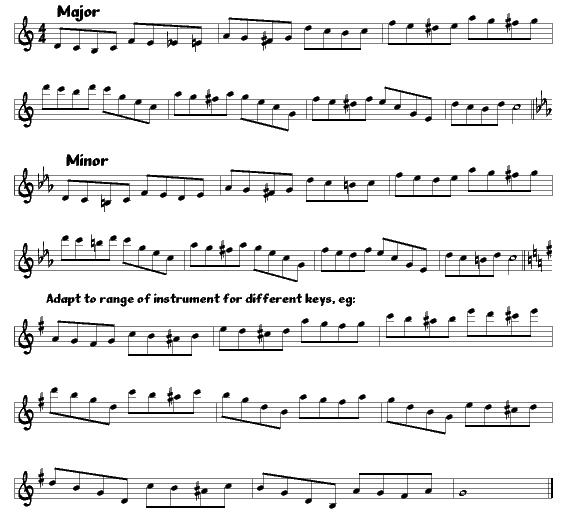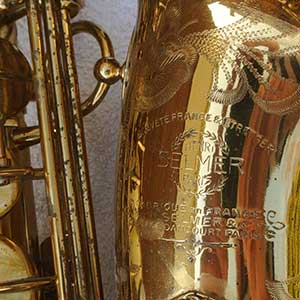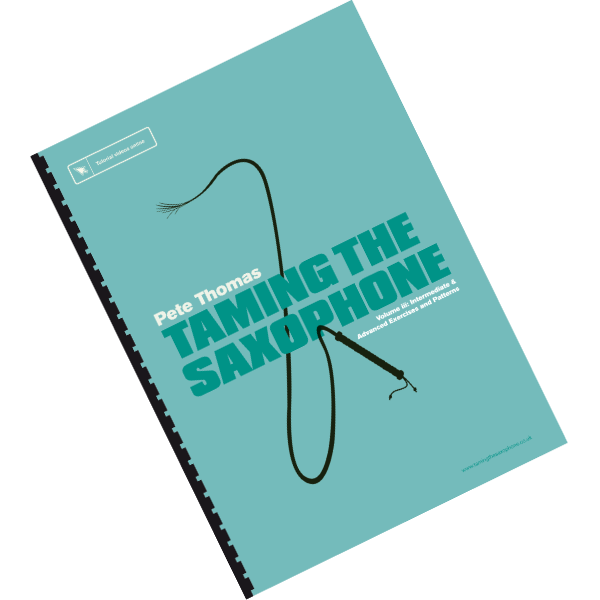Why is it important to warm up first?
This warmup exercise will not only get your fingers loosened up but also functions on various important levels. Just like an athlete, it is best to stretch your muscles before sprinting. However, this is not just a physical (fingering) exercise but is also great at focussing your mind so that you are practicing thoughtfully, not just fingering “muscle memory.” It will also help you think about some of the basic chords that we use for improvising, and how they fit in with the scales and arpeggio practice. Having said that you don’t even need to do an awful lot of thinking, the structure of the exercise will gradually and almost subconsciously embed the sound and idea of chord structure into your brain even if you don’t want to think about improvising yet.
Get your Fingers, Mouth and Brain in Gear
The exercise consists of a series of ascending four-note (7th chord) arpeggios and descending scale fragments. So you start with an arpeggio up from the first note of the scale then down the scale into the arpeggio built on the next scale tone, the sending. You should practice this in every key, I have written roman numerals rather than the chord name to help you get used to thinking about the function and structure of chords built on each tone of the scale. As you play the exercise, think of the root note names for the arpeggios as well as the numeral, so in C major:
- Chord I = C major 7
- Chord II = D minor 7
- Chord III = E minor 7
- Chord IV = F major 7
- Chord V = G7
- Chord VI = A minor 7
- Chord VII = B minor 7 b5 (Ø7)
Additionally this is helpful with voice leading or guide tones. This means that one arpeggio flows melodically to the next via a logical step rather than an interval leap
In the book, this is written out in all keys
Play Audio

Video demonstration:
Articulation
Try this with various articulations:

- legato
- legato tongued, (soft tongued)
- staccato
- bebop tonguing
You can use straight eighth notes or varying amounts of triplet feel. Any speed but you must keep a steady tempo throughout. Don’t slow down for tricky passages then speed up, you should start at a slower tempo. Practise any difficult bits on their own until you can play them as fast as the easy bits.
More Warmup Exercises From Taming The Saxophone Vol 3
Ex 1.02
This exercise is good once you know all your scales, it’s a useful way of playing the scales but with short 4 note groups that are less boring to practice and often more useful for improvising. Practice this in all keys, you will need to adapt slightly to fit, but try to cover the entire range of the instrument not just from tonic to tonic. Try it with harmonic and melodic minor too. When practicing the melodic minor it’s more useful for jazz to use the ascending version for both up and down. Makes life easier too.

Ex 1.03
Practice this in all keys, where possible play over two octaves or else adapt to fit the whole range of the instrument. This is a particularly useful pattern which sounds good in improvisation.

Ex 1.04
This pattern is based around triad arpeggios, but with the diatonic note above and the chromatic note below each chord tone. This is useful for tonic areas of chord sequences.



Fantastic. Great worming notes. I am new on your site. Thank you for your hard work presenting this stuff.
Just what the Doc ordered